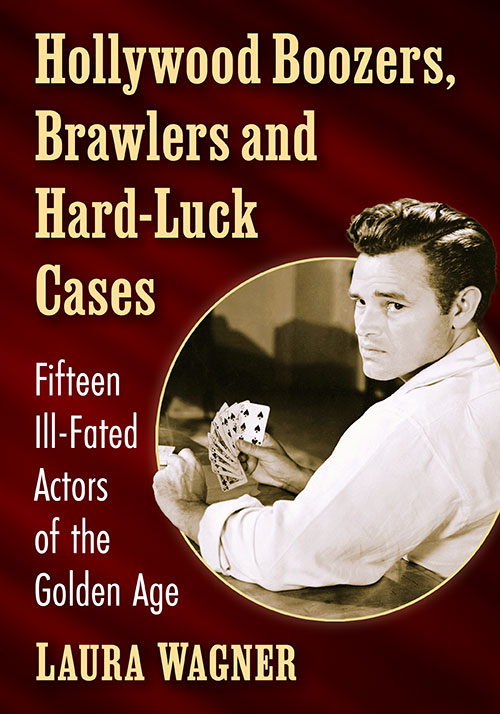A Book Review by Maysaa H. Jaber.
Adds a human, sometimes tragic face to those at the heart of moviemaking during the Golden Age.”
Laura Wagner’s Hollywood Boozers, Brawlers and Hard-Luck Cases: Fifteen Ill-Fated Actors of the Golden Age (McFarland, 2025) takes readers on a journey of rediscovering the life stories of lesser-known actors in Hollywood during an iconic epoch of American cinema, focusing on tragedies, secrets, and little nuggets. The book features quite a neglected, under-researched, yet highly intriguing topic: the B-list actors who had their fair share of struggles and challenges in Hollywood. Those “hard-luck cases” are worthy of consideration.
From the 1910s through the end of the 1950s, what is commonly referred to as the “Golden Age” of Hollywood, remains an influential, perhaps revolutionary time of American cinema. The Golden Age brought about major studio systems which oversaw the production and distribution of movies, a distinctive narrative and visual style, and witnessed the celebration of iconic movie stars and pictures. It was a time of innovation that has had a lasting impact on the American film industry that is still felt to the present day. Wagner explores this world through a personal, one can say intimate, lens that gazes into the details of the B-list actors who constituted the fabric and the foundation of Hollywood’s Golden Age.
Wagner’s book examines the biographies of fifteen actors, whom she calls “boozers, brawlers and hard-luck cases.” Ross Alexander, David Bacon, Bruce Cabot, James Cardwell (see top image, left, in He Walked by Night, 1948), William Eythe, Wallace Ford, Billy Halop, Weldon Heyburn, Ronald Lewis, Tom Neal, Allan Nixon, Craig Reynolds, Danny Scholl, Lawrence Tierney, and Sonny Tufts are not the superstars whom people worshipped such as Humphrey Bogart, Cary Grant, Marilyn Monroe, to name only a few. People, however, related to those B-list actors who could also offer a breadth of stories and experiences. Wagner’s book does not simply provide formal biographical accounts of those almost-forgotten Hollywood “stars.” Doing her due diligence, Wagner uses thorough research, anecdotal information, interviews, and many other sources to humanize the life stories of those actors. From Ross Alexander, who starred as a second lead in movies such as A Midsummer Night’s Dream (19935) and Captain Blood (1935) and faced myriad struggles throughout his life that ended tragically in suicide, to Sonny Tufts, who appeared in 1940s movies including So Proudly We Hail (1943) and Cat-Women of the Moon (1953), and is the subject of an urban legend relating to a radio interview, not only does Wagner tell the life stories of these actors, but she also uncovers the complicated, painful and tragic facets of their lives.

Wagner shows extensive knowledge of even the smallest details of the subjects of her book. Her references are impressive; the bibliography at the end of the book offers the reader a comprehensive and detailed account of information. There are also many photographs that add to the reading experience. Wagner writes in clear and informative style, and while the book offers information in a lucid and succinct manner, the author also shows a compassion to these actors – humor and passion run through her words and capture the essence of her work.
This is an intriguing book and a gem to those interested in Hollywood in general and that era of moviemaking in particular. Taking the reader behind the scenes, quite literally, Wagner’s book provides a perspective on the rich and complicated experiences. The writer of Hollywood Hard-Luck Ladies (2020) returns with a book that introduces the glitz and glamour of Hollywood yet adds a human, sometimes tragic face to those at the heart of moviemaking during the Golden Age.
Maysaa H. Jaber, PhD, is the author of Criminal Femmes Fatales in American Hardboiled Crime Fiction (Palgrave Macmillian, 2015) and currently serves on the Scientific Research Commission in Baghdad, Iraq.


